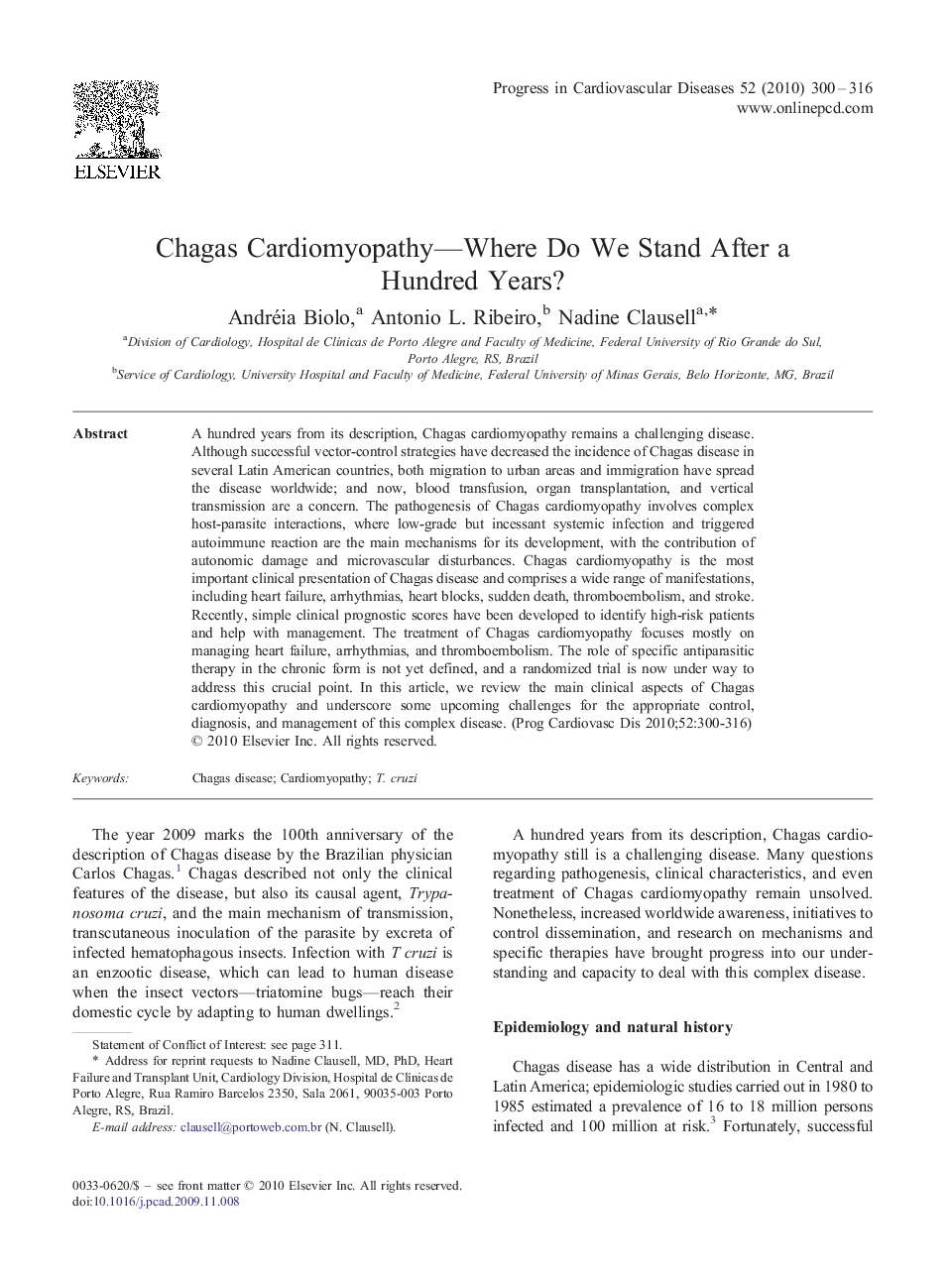| Article ID | Journal | Published Year | Pages | File Type |
|---|---|---|---|---|
| 3006585 | Progress in Cardiovascular Diseases | 2010 | 17 Pages |
A hundred years from its description, Chagas cardiomyopathy remains a challenging disease. Although successful vector-control strategies have decreased the incidence of Chagas disease in several Latin American countries, both migration to urban areas and immigration have spread the disease worldwide; and now, blood transfusion, organ transplantation, and vertical transmission are a concern. The pathogenesis of Chagas cardiomyopathy involves complex host-parasite interactions, where low-grade but incessant systemic infection and triggered autoimmune reaction are the main mechanisms for its development, with the contribution of autonomic damage and microvascular disturbances. Chagas cardiomyopathy is the most important clinical presentation of Chagas disease and comprises a wide range of manifestations, including heart failure, arrhythmias, heart blocks, sudden death, thromboembolism, and stroke. Recently, simple clinical prognostic scores have been developed to identify high-risk patients and help with management. The treatment of Chagas cardiomyopathy focuses mostly on managing heart failure, arrhythmias, and thromboembolism. The role of specific antiparasitic therapy in the chronic form is not yet defined, and a randomized trial is now under way to address this crucial point. In this article, we review the main clinical aspects of Chagas cardiomyopathy and underscore some upcoming challenges for the appropriate control, diagnosis, and management of this complex disease.
